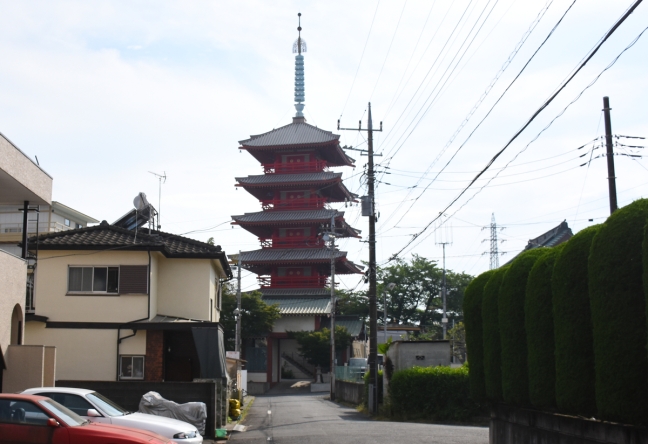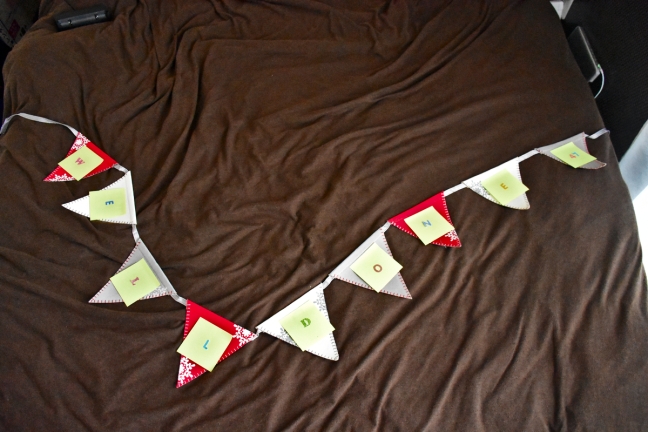The Kanto area is usually described as a plain, but navigating it by bicycle isn’t as simple as that might sound. The roads in Kanagawa try relentlessly to funnel you toward central Tokyo, but I wasn’t quite ready to return to the familiar white noise of Tokyo traffic. Instead, I needed to spend a bit more time with the rattle and roll of rural truckers as I cut northwest from Yokohama, over its deceptively sharply contoured topography, and headed for Hachioji.
Situated in the far fringes of the western end of Tokyo, Hachioji is the end point of a suburban smear that spreads itself over a 30km stretch of torn-up, concreted-over former countryside between the edge of Tokyo’s 23 central wards and the mountains that separate Tokyo from Yamanashi Prefecture. It’s also where I first lived when I moved to Tokyo in 2001.
Thus, the first familiar glimpses of Tokyo I received upon re-entering the sprawling non-city weren’t the great traffic-funnels of Koushu-kaido or Route 246 but the vaguely rural outposts of Machida and Hashimoto, before diving once more into the hills, trees and tightly-packed, semi-suburban farmland that fringes the outskirts of Hachioji.
One of the ironies of Tokyo is that while it absorbs creativity from neighbouring cities, often seeming to leave them barren but for the most middle-of-the-road J-rock wannabies, Tokyo extends so far west that, while Hachioji is nominally an outpost of Tokyo, it actually has more of a distinctive music culture than many cities in neighbouring prefectures.
The most famous musician from the area is probably the singer-songwriter Yumi Arai/Matsutoya, who was a prominent member of the generation of 1970s artists who revolutionised Japanese pop, taking it from the disposable bubblegum of the 1960s and bringing it to somewhere more mature and sophisticated. “Yuming”, as she is often known also played a significant role in the continuation and development of bubblegum pop and idol music in the 1980s, as a songwriter (under a pseudonym) for legendary idol singer Seiko Matsuda and most likely a key songwriting influence for Yasushi Akimoto, producer of first Onyanko Club and more recently AKB48.
Probably the act that most typifies Hachioji in the contemporary Japanese rock landscape, however, is Maximum The Hormone, with their trashy punk-metal sensibility and raucous energy, unpredictable but unsublimated by art-school sensibilities. You might be able to find bands with a similar approach in any number of places, but there are few places it fits better than Hachioji. Hachioji isn’t classy, it isn’t fashionable, it isn’t cool, and it doesn’t give a fuck.
It isn’t one-dimensional either, though, and on an upstairs floor of the live venue Rips an intrepid visotor can also find Senseless Records, one of Japan’s leading specialists in emo, post-hardcore and math-rock. With a close relationship with Rips, there’s a small scene of indie and alternative bands centred around Senseless, most notably the albini-esque Malegoat.

I wasn’t staying in the centre of town though, and instead I found my stop for the night signalled by the appearance of a five-story pagoda across a steep valley. In the shadow of that pagoda lay my father-in-law’s house, where I was able to stay the night before leaving my bicycle one last time and taking one final diversion by train to the city of Kofu in Yamanashi Prefecture.
Kofu is one of the smallest prefectural capitals in Japan, separated by mountains from Tokyo and situated far up a sheltered strip of more or less flat land that eventually leads north to Matsumoto in Nagano Prefecture. The grand old lady Fuji reappeared to me as the train emerged from the mountains and wound its way through the idyllic farmland and small villages of Yamanashi.
As the main urban settlement in its area, Kofu naturally has its share of music venues: the apparently folk-biased Feel Rock Café Yumura, the slightly more alternative-looking King Rat, the larger, more mainstream Conviction, and the suits-all-comers Nao Studio Kazoo Hall, not to mention music bars like Time Gang, nestled in amongst the narrow streets of Kofu’s night-time party corner.
Still, I found myself wandering its streets in a daze, unable to concentrate on or engage with what I was experiencing. It may partly be because – especially on a Wednesday afternoon – Kofu isn’t really the kind of city that insists on itself with any great urgency, its elegantly deserted shopping arcades and shuttered storefronts lending it an air of comfortable desolation. It’s also one of the rare places where I had no contact to guide me through the hidden nooks of the local music culture. The one record shop I encountered, Kogakudo, was a clean, manicured space inside a clothes shop, which seemed to specialise primarily in boy bands from the Johnny & Associates stable of chart pop idols.
Where Kanagawa and Saitama are places for musicians who want to keep Tokyo at arm’s length but still stay in touch with with its creative life, Yamanashi is a place for people who want to cut their ties almost completely. It’s a place for someone like Jim O’Rourke to go and build his own studio that he can live and work in throughout the day, unbothered by the constant demands on his attention the Tokyo music scene might make.
More than anything, though, it was because my mind was on Tokyo, and specifically Koenji. I’ve talked before about the difficulty I have in really considering anywhere “home”, but one simple way of defining the word might be that it’s the place that calls you when you’re away. In the early stages of my trip, travelling through the northeast of Japan, I tended to find Bristol, where I grew up in the UK, held a stronger grip on my vision of “home” when I was in the countryside, while Tokyo asserted itself more strongly when I was in a city. Now, in this most rural of Japanese cities, with political events in the UK increasingly alienating me from any lingering attachment to the country, two or three weeks awa from the murder of MP Jo Cox by a fascist paramilitary and the formal descent into parochial bigotry that followed, Tokyo, and specifically Koenji, was the only place I wanted to get back to. That’s where my friends were, that’s where my most important family was, and that’s where my music was.
The next morning I returned to Hachioji, picked up my bike, and flew east as fast as I could, really pausing only to take a crafty photograph for my model aeroplane-enthusiast father of an antique Lockheed Starfighter and a Mitsubishi F-1 on display outside a military installation.
Entering the city from this direction took me down roads and neighbourhoods that shared names with places I knew from the railways stations but which were utterly different when experienced from the roads. It was only upon entering my own ward of Suginami that the Tokyo I knew exploded into full recognition. I made a symbolic point of putting my phone with its map application away in my pocket and navigating the last few kilometres from memory.
Arriving at my empty apartment, Mission Control had before going to work left me a message on post-it notes affixed to a piece of Christmas bunting: “Well done 47”. I wasn’t sure what I’d actually done, and I’m still not, but that at least I could put a number on – 47 prefectures over the course of two main stages of travel, totalling about five and a half months, and here I was back where I’d started.
The following night, I made what I hoped would be a triumphant return, Djing at a small Koenji bar called How High The Moon, interior bedecked with the the kind of millennial hipster trash I love to mock, but which in its own way helps define the identity of a particular layer of Tokyo that I can instinctively feel at least a little close to.
The first live event I go to after returning is just a few doors down from my apartment at the UFO Club in Higashi-Koenji, where new wave revivalist Takashi Nakayama is performing with an ad-hoc band consisting of members of his old band Skyfisher and his then-current one Mukokyu Kakokyu Shinkokyu. Joining him on the bill are new wave-influenced Kyoto band David Boys (I suspect a pun on the Japanese pronunciation of “David Bowie”), Osaka-based avant-pop drummer Suppattukalimar, theatrical Tokyo-based alternative band Half Moon Make Love, and synth-punk lunatics Jebiotto (who I released through my Call And Response label and are the best band in Tokyo).
In a way, it doesn’t feel like I ever really left. My big return to the DJ booth is fun, but there’s also a vaguely uncomfortable feeling of life going on as normal. The event at the UFO Club is great, and seeing bands I’d heard about on my travels in Osaka and Kyoto but not had a chance to see when I was staying there was great. Again though, there was a nagging sense that I was just slotting back into my life as usual. The purpose of travel is that it should change you, shouldn’t it? Was I just one of those tourists Joseph Conrad mocked in Lord Jim, who collect stickers on their luggage but bring nothing more profound back with them from the exotic locations they visit.
Looking back from two years later, there are some things that are different. Whenever I find myself travelling within Japan, I know someone there. Whenever I encounter something new, I can more easily place it in its context. Whenever I want to do something new, I have a far wider net that I can cast for ideas or material. Still, it remains difficult to keep those connections warm and maintain this fragile network. “I’ll be sure to come back, and next time let’s do an event together!” quickly founders under the sheer expense and logistical difficulty of bringing musicians from Tokyo to anywhere but the biggest cities. The venue Nu in Shimane has opened and closed in the time since I came back to Tokyo, with nothing ever coming of my grand plans to take an artist on a grand tour of the northern shoulder of Japan. I have had great times in Sendai since this journey, but have never successfully convinced a band to venture with me any further north. Even a place as familiar to me as Kagoshima, I’ve not had the occasion to revisit since this trip.
At the same time, though, the compilation album Throw Away Your CDs Go Out To A Show, released in the summer of 2017, was a direct product of this journey, both in terms of the bands who participated and the series of six release events that I was able to put on throughout the country. One of Call And Response’s most successful releases, it was built on the back of experiences I would never have had without this journey.
The great songwriter Ian McNabb’s underappreciated Liverpool band The Icicle Works had a song called I Never Saw My Hometown Till I Went Around The World, and for a long time I had been determined to use that as the title of the “homecoming” entry of this blog. I don’t know if my thoughts can be honestly summarised by a sentiment that tidy. For all my fretting about what the meaning of “home” is, I’m can’t be so facile as to declare that this journey gave me an answer. Before embarking on it, though, I didn’t even know it was the question, so if there’s going to be a conclusion for now, let’s let it be that.




























